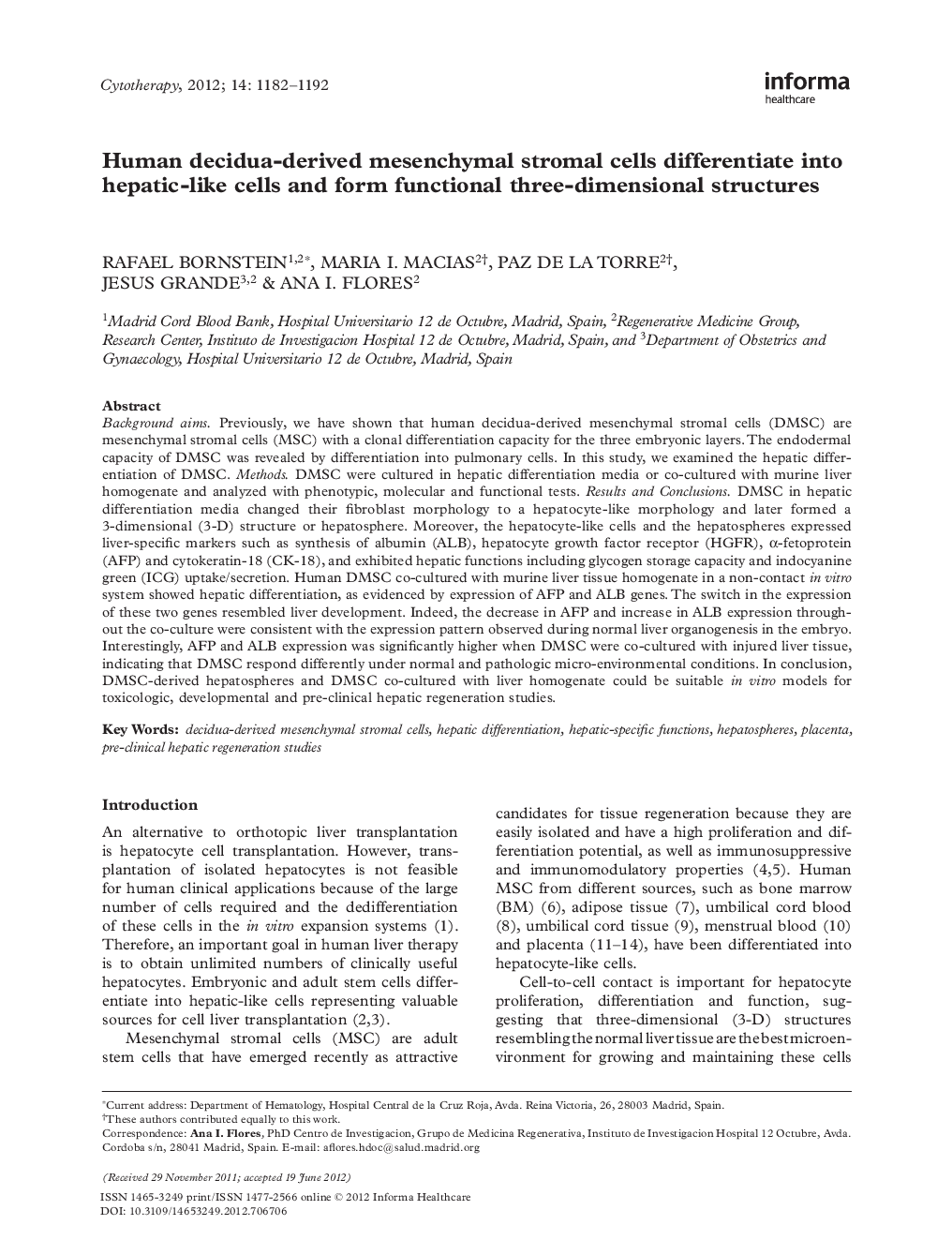| کد مقاله | کد نشریه | سال انتشار | مقاله انگلیسی | نسخه تمام متن |
|---|---|---|---|---|
| 2171322 | 1093484 | 2012 | 11 صفحه PDF | دانلود رایگان |
عنوان انگلیسی مقاله ISI
Human decidua-derived mesenchymal stromal cells differentiate into hepatic-like cells and form functional three-dimensional structures
دانلود مقاله + سفارش ترجمه
دانلود مقاله ISI انگلیسی
رایگان برای ایرانیان
کلمات کلیدی
موضوعات مرتبط
علوم زیستی و بیوفناوری
بیوشیمی، ژنتیک و زیست شناسی مولکولی
بیولوژی سلول
پیش نمایش صفحه اول مقاله

چکیده انگلیسی
DMSC in hepatic differentiation media changed their fibroblast morphology to a hepatocyte-like morphology and later formed a 3-dimensional (3-D) structure or hepatosphere. Moreover, the hepatocyte-like cells and the hepatospheres expressed liver-specific markers such as synthesis of albumin (ALB), hepatocyte growth factor receptor (HGFR), α-fetoprotein (AFP) and cytokeratin-18 (CK-18), and exhibited hepatic functions including glycogen storage capacity and indocyanine green (ICG) uptake/secretion. Human DMSC co-cultured with murine liver tissue homogenate in a non-contact in vitro system showed hepatic differentiation, as evidenced by expression of AFP and ALB genes. The switch in the expression of these two genes resembled liver development. Indeed, the decrease in AFP and increase in ALB expression throughout the co-culture were consistent with the expression pattern observed during normal liver organogenesis in the embryo. Interestingly, AFP and ALB expression was significantly higher when DMSC were co-cultured with injured liver tissue, indicating that DMSC respond differently under normal and pathologic micro-environmental conditions. In conclusion, DMSC-derived hepatospheres and DMSC co-cultured with liver homogenate could be suitable in vitro models for toxicologic, developmental and pre-clinical hepatic regeneration studies.
ناشر
Database: Elsevier - ScienceDirect (ساینس دایرکت)
Journal: Cytotherapy - Volume 14, Issue 10, September 2012, Pages 1182-1192
Journal: Cytotherapy - Volume 14, Issue 10, September 2012, Pages 1182-1192
نویسندگان
Rafael Bornstein, Maria I. Macias, Paz de la Torre, Jesus Grande, Ana I. Flores,